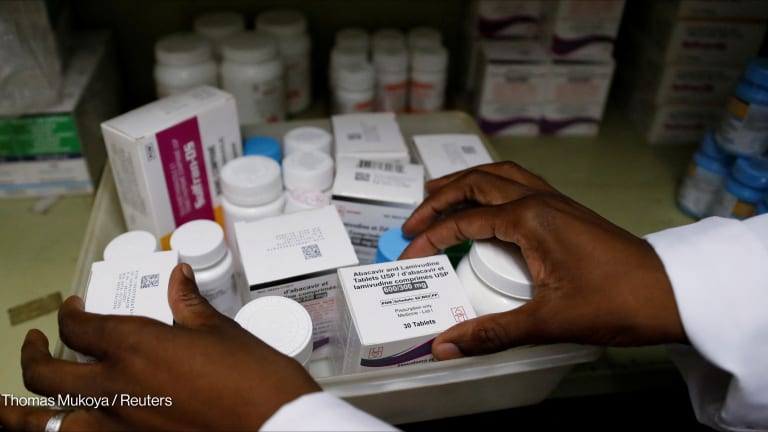
Over the past decade, the U.S. President’s Emergency Plan for AIDS Relief — in partnership with other countries and financing mechanisms — has helped change the trajectory of the AIDS epidemic. By providing unprecedented levels of support for antiretroviral treatment, prevention and care services, the program averted millions of infections and deaths in men, women and children around the world.
A key component of PEPFAR’s enduring success has been its deliberate focus on setting specific, measurable treatment and prevention targets; investing funding to meet and surpass those targets; and building upon prior success by setting ambitious new targets to drive even greater impact in the future.
Yet right now, PEPFAR is operating without targets. In fact, the program has been without targets since December 2013, when the most recent set of targets expired.
This is not to say the program has ceased its important work on the ground. Indeed, under current Ambassador Debbie Birx’s leadership, PEPFAR has continued to deliver services and save more lives, even in the absence of targets. So why then do targets matter?
Quite simply, targets drive action. Just look at the impact made by the targets announced back on World AIDS Day in 2011. PEPFAR pledged to not only support 6 million people with treatment by 2013 (which at the time seemed like a lofty goal on its own), it also prioritized two biomedical prevention methods that had previously received insufficient investment — medical circumcision and prevention of mother-to-child transmission of HIV. The result was two years of increased funding and significant programmatic focus on these interventions, the surpassing of the 6 million treatment goal, and ultimately more lives saved.
Without these targets, it is highly unlikely that PEPFAR would have quadrupled the number of medical circumcision procedures it supported or been able to announce the millionth baby born HIV-free. Such targets also help to drive collective action by and coordination with other donors that measure their funding commitments against the U.S. response, and which may pull back if they sense U.S. commitment is waning.
Targets are critical to maintaining political support and buy-in. PEPFAR owes much of its success to more than a decade of strong, bipartisan congressional support. That political support exists in large part because PEPFAR has consistently set and achieved ambitious programmatic goals, allowing the program to share a compelling story about the lives it has saved and the wider impact it has had in communities and countries. Targets also help hold the program accountable for delivery, clarifying year-on-year objectives that can guide progress and highlight when additional focus is needed. Without targets to meet and exceed, demonstrating PEPFAR’s programmatic value and impact to policymakers on Capitol Hill — and to American taxpayers — is made more difficult.
Ultimately, targets translate PEPFAR’s vision into action. PEPFAR’s vision is clear: to help control the AIDS epidemic and deliver on the promise of an AIDS-free generation. This means prioritizing high-impact, evidence-based interventions and using data to determine where and how services should be focused to maximize impact. But having a well-articulated vision alone is insufficient: Advocates and implementers alike need targets to act as tangible measures of where the program will focus and what we will achieve when we commit to putting this vision into action.
PEPFAR is operating without targets at a critical time in the global HIV and AIDS response. Within the year, new guidelines will be released recommending early initiation of treatment for all people diagnosed with HIV. This seismic shift in international standards will force PEPFAR to confront a range of new programmatic, fiscal and political challenges.
In September, leaders will gather at the United Nations to endorse and adopt a new set of sustainable development goals, which are expected to include the promotion of health and a target to end the AIDS epidemic by 2030.
For PEPFAR targets to be absent from these discussions is a glaring omission and a missed opportunity — particularly in light of the program’s transformative role in improving the global health landscape and how integral it will be to any future HIV and AIDS successes.
There is still time to fix this problem, but the clock is ticking. It is time for PEPFAR and the White House to establish new treatment and prevention targets to guide the years ahead. These targets should be announced ahead of September’s U.N. meetings, so that PEPFAR’s vision can be included in and help shape the global dialogue. Every week and every month that goes by, we risk losing momentum. And in the fight against AIDS, we have no time to lose.
This guest column is co-authored by policy leaders from five nongovernmental organizations: Catherine Connor, senior director of public policy at the Elizabeth Glaser Pediatric AIDS Foundation; Erin Hohlfelder, policy director for global health at the ONE Campaign; Christine Lubinski, vice president for global health at the Infectious Diseases Society of America Education & Research Foundation; Greg Millett, vice president and director for public policy at amfAR, The Foundation for AIDS Research; and Kevin Fisher, policy director at AVAC: Global Advocacy for HIV Prevention.
To read additional content on global health, go to Focus On: Global Health in partnership with Johnson & Johnson.
Read more stories on AIDS relief:
► UNAIDS chief: Today's HIV epidemic is 'completely different'
► Bold goal of stopping HIV is motivating great science
► The HIV 'emergency' isn't over, says PEPFAR chief
► New deal allows generics makers license to sell HIV drug
► Which countries are winners, losers (and in-between) in Obama's 2016 foreign aid proposal?








